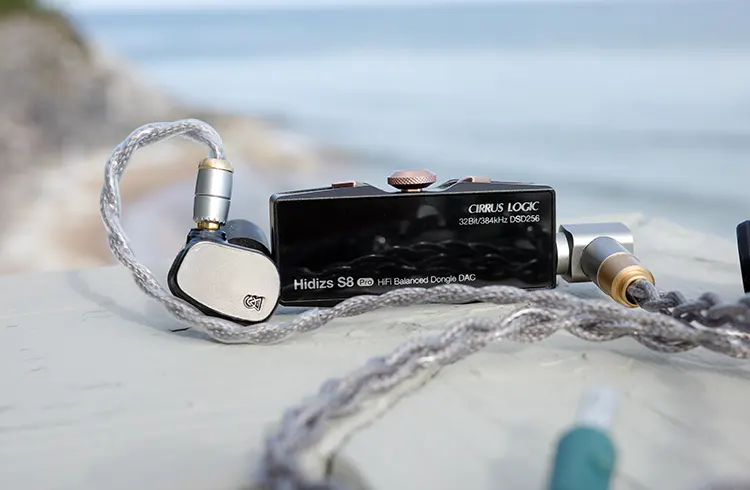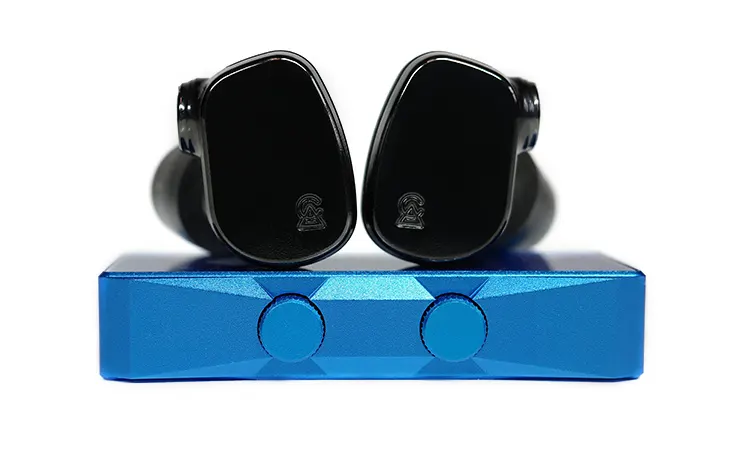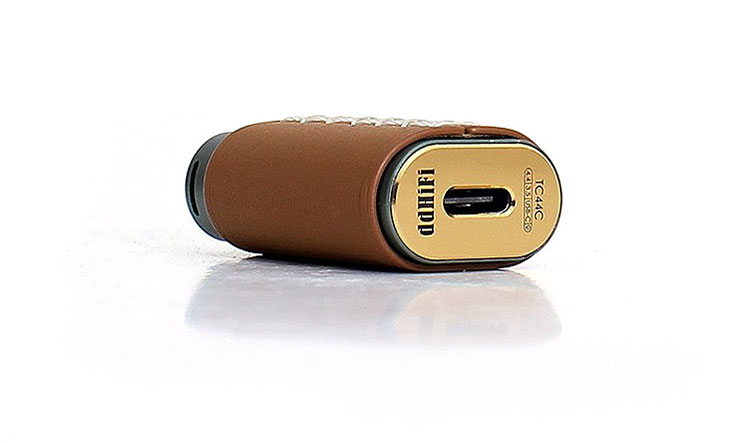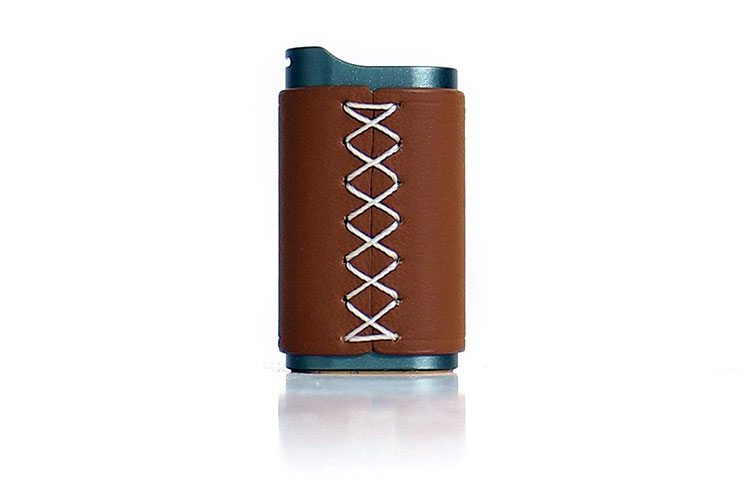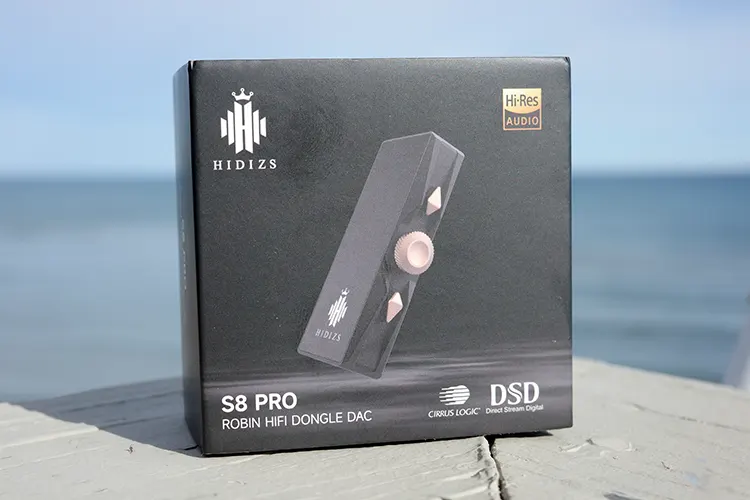Synergy
Having the six filter choices not only helps with different headphones and IEMs’ sound signatures but also allows the user to tailor the signature for multiple genres and sources.
You will find that the S8 Pro Robin can scale fairly well across multiple sources and listening devices.
Efficiency
The S8 Pro Robin also carried more background noise than the S9 Pro Plus Martha, especially with sensitive IEMs such as the Campfire Audio Solaris 2020. Between songs, the noise could be heard but dropped to inaudible when the music started.
The Cirrus Logic CS43131×2 DAC chips are a compromise for an affordable offering, helping to keep the price in check, and can code PCM up to 32bit/368kHz and native DSD of 64/128/256kHz, which is lower than Hidizs higher models.
Power
With 80mW+80mW@32Ω single-ended and 160mW+160mW@32Ω balanced, there is just about enough power for IEMs and some headphones, and adequate for most of the sources I used.
That lower-level power still translated into a smooth character, which many might want on their smartphones to counter what normally might be a bright signature from the stock dongle.
Pairings
Switching the filter choices I started pairing the S8 Pro Robin with harder-to-drive headphones such as the FiiO FT3 350Ω.
I had some success but this setup functioned better with the easier-to-drive FiiO FT3 32Ω edition and CA’s Solaris/Supermoon models. All 3 had a fuller sound meaning the S8 Pro Robin struggled with the demanding 350Ω FiiO.
This is where the HiBy Project ACE worked quite well, giving me a very good sound representation across both the MacBook Pro and iPhone usage in a more affordable package.
My favorite pairing with the iPhone though was the Campfire Audio Solaris 2020. Known to have a more mature, smooth signature, the Solaris presented a more vibrant signature when changing filter options to red or yellow, enhancing the level of details as well.
I also found using this combination that the detail presentation stood out as more defined and refined compared to the other options, that were used.
Changing to the FT3 32Ω edition, the preferred filter was blue, which enhanced the lower frequencies, adding a bit of reverb. This warmed the FT3 just enough to not lose details while giving a smoother signature.
The S8 Pro Robin can drive the FT3 without much of an issue, with the volume at about 50% on both my MBP and iPhone achieving a good listening level. The soundstage of the FT3 did not suffer either, making for a thoroughly competent listening duo.
When using my MacBook Pro, I preferred to use either the Supermoon or Solaris 2020, mentioning above that the Solaris was my preferred pairing on my iPhone too.
The Supermoon was probably overkill in this scenario but showed that the S8 Pro Robin can scale particularly well when used with a competent listening source.
Select Comparisons
Hidizs S9 Pro Plus Martha
The Martha I reviewed recently gave me an appreciation for the tuning HIDIZS puts into their dongle/DACs. I came away impressed with its functionality and sound filter choices, especially after a firmware update.
Features
The Hidizs S9 Pro Plus Martha uses a fourth-generation processing circuit architecture developed by Hidizs. This is a fully balanced circuit architecture consisting of a USB interface processor, DAC, independent headphone amplifier, and POP sound cancellation system.
This DAC chip is an ES9038Q2M and supports a maximum 32bit/768kHz PCM sampling rate, with an SNR of up to 128dB and a THD+N of -120 dB.
Power reaches a peak of 138mW @32Ω for the 3.5mm single-ended, and 180mW @32Ω for the 4.4mm balanced.
This is slightly higher than the S9 Pro in 3.5mm SE (100mW @32Ω) but lower for balanced (2.5mm BAL, 200mW @32Ω). Both also use the same chipset, with a new jitter clock in the S9 Pro Plus Martha separating the two.
It is more powerful and uses a higher-grade chipset within it than the S8 Pro Robin.
Design
Small size is an advantage to a dongle/DAC and the S9 Pro Plus Martha accommodates with svelte dimensions of 55mm×25mm×11mm, massing out at only 17g (11g for the S9 Pro). Very, very close to the S8 Pro Robin.
Coming in anodized blue, silver or black the rectangular unit has beveled edges on the long skinny sides, with the two actuation buttons highlighting one of those sides.
Inlaid plastic covers the largest two faces, which have the nomenclature on the back, and the Hidizs logo (and “HIDIZS”) on the other, which both light up to show the decoding format according to color.
Performance
Utilizing the “neutral” filter (green color when switching), the sound provided a more vibrant signature than the S8 Pro Robin, with good authority to the low end, while staying controlled.
With a front-forward signature, the S9 Pro Plus Martha is considered to have a small W-signature but tends towards more neutral, especially when compared to the S8 Pro Robin.
The details tend to fall off as a result of not straying too far from neutral, but I never found it lacking in energy. Since it is more neutral, there is less coloration to the sound, but that is where each of the six filters can change what we hear.
This also translated into better clarity and detail retrieval than the S8 Pro Robin.
ddHiFi TC44C
When we reviewed the TC44C, it was quite a novelty, showing that a balanced dongle/DAC need not look boring while presenting competent sound qualities. I still consider it one of my favorite dongle/DACs as well.
While excelling in a small shell, it has a high-power output level that seems to be underrated by many and held its own here without issue.
However, the tradeoff is the lack of features since there is no volume control or a mobile device app with sound shaping features or firmware upgrades.
Features
Running the same Cirrus Logic CS43131 2-channel low-power DAC one-chip solution with a built-in amplifier, the TC44C provides 120mW at 32Ω. The chip can support headphone fingerprinting and amplification post-processing as well.
It uses little power (much less than the S8 Pro Robin) to operate and the chip itself needs just a 2-volt DC power source to operate, with much better battery usage than the S8 Pro Robin.
Design
The ddHiFi TC44C is somewhat small in size and measures 40.8x22x12.5mm while weighing 12.9 grams. The oblong shape is unique in the dongle/DAC world, and to me is one of the best looking as well.
The added leather sleeve not only gives the TC44C an upscale look but also functions to help the user grasp the device as well. To me, this may be an understated characteristic of many dongle/DACs since protecting our devices should be of paramount importance.
Even with the “odd” shape, I never felt it was too awkward in size to be much of a bother. The longer included cable (longer than S8 Pro Robin’s included cable) also meant it could sit more comfortably in my pocket, doubling back behind my iPhone.
The only fault which may hinder some is the raised lip where the lanyard attaches. It can get in the way of larger 3.5mm jacks rendering some of your IEMs useless in single-ended mode.
This does knock out most headphones in single-ended mode, but since I ran mostly balanced setups, found it acceptable.
Performance
The TC44C comes across to me as warmer in signature than the S8 Pro Robin, but this can be “evened out” when using the filter choices. I also found that the power was quite adequate across my listening sources.
The level of detail on the TC44C was higher than the S8 Pro Robin, with a darker background as well. That level of detail came about with good weight of notes, but without becoming mushy in thickness.
To me, the ddHiFi has better detail resolution as a result, but the filters can again accommodate that slight difference.
Combined, I found the soundstage of the TC44C to be larger in all dimensions than the S8 Pro Robin, but not by much.
My Verdict
Whenever a “budget-minded” option presents itself after a very competent model, it is natural to compare the model to the predecessor, or higher model in this case.
Martha is a very competent dongle/DAC with good performance and a hard act to follow. But follow it the S8 Pro Robin did, and it did so competently.
While not as vibrant or detailed as the Martha, when compared to models at its level, the S8 Pro Robin is a capable dongle DAC. Add in the filter change options, which can make the user quite happy in their listening devices; along with ease of use and the S8 Pro Robin shines.
Will it win against higher-level models? Probably not. But when taken singularly you get a pleasing dongle DAC that can vary its sound according to the listener’s tastes.
With filter changes or pairing with your preferred listening source, the S8 Pro Robin presents an affordable option as an upgrade for users with smartphones.
Hidizs S8 Pro Robin Technical Specifications
- Dimensions: 58mm x 28mm x 12mm
- DAC Chip: CS43131×2
- DSD: Native DSD64/128/256
- PCM: Support up to 32Bit/384kHz
- Output option: Compatible with single-ended 3.5mm and balanced 4.4mm earphones
- Sampling rate indicator: Support
- Shell material: CNC-integrated aluminum alloy
- Function buttons: 3
- Switching filter: Support
- Transmission interface: Type-C interface interchangeable cable design
- Supported system: Android, Windows, Mac OS, iPad OS, iOS, Harmony OS
- Net weight: About 17g
- Packing list: Type-C to Type-C Cable×1, Type-C to USB-A adapter×1, Type-C to Lightning Adapter×1, User manual×1, Warranty card×1


